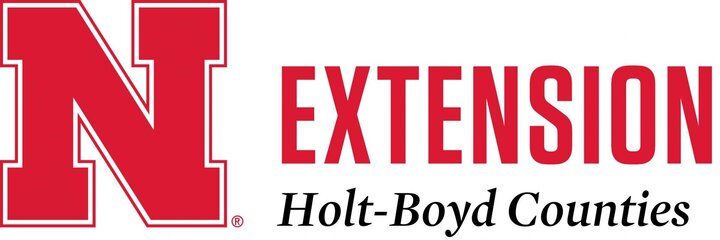
Nebraska Extension Educator - Holt & Boyd Counties - LaDonna Werth
Nebraska Extension Educator - Holt & Boyd Counties - Amy Timmerman
Nebraska Extension Educator - Holt, Boyd, Garfield, Loup, & Wheeler Counties - Bethany Johnston
Nebraska Extension Educator - Brown, Rock, & Keya Paha Counties - Brittany Spieker
Nebraska 4-H Assistant - Holt & Boyd Counties - Debra Walnofer
August 2-9: Holt County Fair, Holt County Fairgrounds, Chambers, NE
August 18: DUE: Non-Perishable State Fair 4-H Exhibits, at your County Extension Office, either Butte or O’Neill, NE
August 19: DUE: Perishable State Fair 4-H Exhibits, at your County Extension Office, Butte or O’Neill, NE
August 22 – September 1: Nebraska State Fair, Grand Island, NE
What’s Going On in the World of Early Childhood?
Early childhood education can be somewhat of a mystery, especially since many people don’t think of it as “education” until children reach elementary school. Early childhood begins at birth and typically goes all the way until children are age eight or entering the third grade.
Unfortunately, early childhood today is changing more and more in our technologically advanced age. Education consultant, Rae Pica, has seen several of these changes occurring throughout her years of service since the 1980s. In her article published in Community Playthings, she lists three things that seem to be recurring areas in need of improvement in early childhood education:
- More children are unable to cross the mid-line of the body.
- Children don’t know how to play anymore.
- Children have no fine motor control.
- More children are unable to cross the mid-line of the body.
Amidst the busy lives of parents all over the world, babies are spending less and less time on their tummies, which is vital in the development of muscles needed to crawl and perform cross-lateral movements. What parents need to remember is that the body
LaDonna Werth
Extension Educator
Phone: 402-336-2760
E-mail: lwerth2@unl.edu

and mind work together. Children need to practice moving in a variety of ways to gain confidence in their skills. Pica writes, “what impacts the body’s development impacts the brain’s development, and the sooner we acknowledge that, the better off our children will be.”
Children don’t know how to play anymore.
Almost every animal on our planet plays at some point or another in their lives. Play is necessary to learn the skills that are needed to become successful adults. Educators are reporting that children are simply imitating on-screen characters or are just standing around during free-play time because they are at a loss as to what to do. With the rise in technology, children are exposed to much more media, thus diminishing the need for imaginative play. As early childhood educators, it is vital that we facilitate play and give children the time, space and materials to foster imaginative play.
Children have no fine motor control.
This, again, goes back to technology. Children aren’t getting the same opportunities to utilize crayons, scissors, and other utensils as much as they are given a tablet or digital device to keep them occupied. Children are also not developing and using large muscles which relates to the development of the small muscles such as those in the hands and fingers. If large muscles are not developed, it becomes very difficult for small muscles to progress as well. Children must have the strength and endurance in large muscles in order to begin using fine motor control skills (Buttfield, 2017). This need stresses the importance of play and practice with a variety of materials and utensils.
Early childhood education is one of the most important times in a child’s life. Giving them ample opportunities and experiences with open-ended manipulatives can help overcome the above challenges. For more information on open-ended activities and ideas, check out https://www.communityplaythings.com/resources.
Source: Sarah Roberts - Extension Educator (The Learning Child Blog – October 1, 2018)
Managing Corn Harvest Loss: A Key to Controlling Volunteer Corn in Rotated Cropping Systems
Research Highlights
- Harvest losses in Nebraska corn fields are more common - and costly - than many realize.
- Lost kernels often result in volunteer corn infestations the following season, impacting yield and weed control.
- Even small losses can limit crop rotation options and drive up herbicide costs.
- Checking harvest efficiency and planning for volunteer management can protect both yield and input investment.
Corn is one of Nebraska’s most important crops, with more than 10 million acres planted each year. Despite advances in hybrid performance and harvesting technology, harvest loss remains an unavoidable reality. While a few scattered kernels may not seem consequential at first glance, these lost seeds often lead to significant volunteer corn infestations the following year, posing serious agronomic and economic challenges in corn-soybean and other rotational systems. Nebraska has about 3.5 million acres under corn after corn rotation. Management of volunteer corn in corn is a challenge.
Our recent multi-county study in Nebraska highlights the extent of corn harvest losses and how these losses directly relate to volunteer corn infestation in subsequent seasons. The findings not only provide a benchmark for expected harvest loss
Amy Timmerman
Extension Educator
Phone: 402-336-2760
E-mail: atimmerman2@unl.edu

in Nebraska conditions, but also serve as a call to action for growers to proactively manage both their harvesting operations and post-harvest control strategies.
Why Harvest Loss Matters
Corn harvest loss can be categorized into pre-harvest and mechanical losses. Pre-harvest loss results from extreme weather events like hailstorm and high winds, green snap or stalk rot causing ears to drop before harvest. Mechanical loss typically occurs at the combine due to improper settings or operator error, with kernels lost at the header, threshing unit or during grain separation.
Corn field with uneven early-season growth showing variable plant height and stand density, likely due to poor emergence or environmental stress.
Even relatively minor harvest losses translate to significant seedbanks of viable corn. If not effectively controlled, these volunteer corn plants compete with the following crop for light, water, space and nutrients, ultimately reducing yield. In soybean, for example, as little as one volunteer corn plant per 10 ft2 has been shown to reduce yield by up to 22% (Chahal and Jhala 2016).
Moreover, volunteer corn can complicate insect resistance management. It may serve as a host for pests such as corn rootworm or fall armyworm, undermining the value of Bt traits and increasing insecticide reliance.
Nebraska Study: Scope and Methods
To understand real-world harvest loss and its implications, we conducted a two-year study (2020 and 2021) across 47 commercial corn fields in south-central and southeastern Nebraska. Commerical corn fields were located in six counties: Clay, Fillmore, Hamilton, Lancaster, Seward and York.
From each field, 16 post-harvest samples were collected in a “W” pattern using a 20x20-inch quadrat to count lost kernels. Additional data such as yield, hybrid, irrigation status and nitrogen use were recorded from growers. Collected kernels were dried, weighed and tested in laboratory conditions for germination after mimicking winter storage.
Key Results
Average harvest loss was 8.3 bu ac–1 (1.5% of average yield) in 2020, and 4.4 bu ac–1 (0.7% of average yield) in 2021.
There was no correlation between harvest loss and yield, hybrid, irrigation status or nitrogen rate.
While average loss in both years remained below 2%, some fields experienced losses exceeding 1,350 bu ac–1, especially where green snap or wind damage occurred prior to harvest.
In 2020, the average corn harvest loss was approximately 6.3 kernels ft–2. Whereas in 2021, the loss averaged 3.1 kernels ft–2.
The laboratory germination rate of the collected corn kernels was 51%, indicating that about half of the lost kernels had the potential to emerge as volunteer corn in the following season. This means potential volunteer corn densities of 3.1 plants ft–2 in 2020 and 1.5 plants ft–2 in 2021.
Real-World Implications for Growers
Corn harvest loss represents a “double hit” - economic loss from reduced yield and future crop yield drag due to volunteer corn. In addition to yield impact, managing volunteer corn increases herbicide costs and narrows crop protection options, especially as stacked herbicide-resistant hybrids become more common.
The study underscores three actionable areas for growers:
Monitor Corn Harvest Efficiency
Conduct loss checks behind the combine to quantify dropped kernels. Adjustments to header height, rotor speed, sieve clearance and forward speed can substantially reduce harvest loss. Even experienced operators can benefit from periodic recalibration and field-specific adjustments.
Plan for Volunteer Corn Management
Knowing the number of lost kernels per square feet helps predict volunteer pressure. In fields with high corn harvest loss, integrating cultural, mechanical and chemical control — including tillage or herbicides - become essential.
Crop Rotation for Volunteer Corn Management
Incorporating crop rotation offers greater flexibility in managing volunteer corn. Continuously planting corn limits herbicide choices for volunteer control, but rotating to a different crop, such as soybean, opens opportunities to use alternative herbicide modes of action. For example, in a corn-soybean rotation, grass killing herbicides such as Assure II, Fusilade, Fusion, Poast, Select Max, can be applied post-emergence in soybean to effectively control volunteer corn.
Scout Early
Volunteer corn in soybean, dry beans or sugarbeet may harbor corn pests or interfere with Bt insect resistance management plans. Scout early and tailor your herbicide programs to ensure timely and effective control. Early-season control can reduce competition of volunteer corn with crop.
Looking Ahead
This is the first study from Nebraska that quantifies corn harvest loss and its link to volunteer corn emergence in commercial production systems. While average losses might seem manageable, individual fields can vary widely depending on hybrid, weather, harvest timing and machinery setup. Volunteer corn infestations of 1.5–3 plants ft–2 are enough to compromise yield and pest control plans in soybean, sugarbeet, dry bean, and even corn-on-corn rotations.
Producers can use these benchmarks to evaluate their own operations and take steps to reduce corn kernel loss and its long-term impacts. Reducing harvest losses not only improves economic returns but also contributes to more sustainable weed management in Nebraska cropping systems.
Source: Trey Stephens - Former Graduate Student, Department of Agronomy and Horticulture; Vipin Kumar - Graduate Research Assistant, Department of Agronomy and Horticulture; Jenny Brhel - Extension Educator; Amit Jhala - Professor and Associate Department Head, Department of Agronomy and Horticulture (CropWatch – July 31, 2025)
What Does Summer Pneumonia Look Like in Calves, And What to Do About It?
Summertime for cow-calf producers is usually a low stress period of the year. With calving season behind us and cattle out to summer pastures, it’s easy to hit cruise control and take a breather before we start to think about fall work and weaning season.
While this can provide a much-needed break, don’t forget that there is the potential for lurking problems in pasture if we don’t remain vigilant about monitoring cattle health. One of the most common health issues that producers face is summer pneumonia in suckling calves.
Summer Pneumonia in the Herd
A survey of veterinarians led by AR Woolums suggested that across the plains states about one in five herds will have cases of summer pneumonia in a given year. In a related survey of beef producers by the same research group, the number of cases of summer pneumonia appeared to correlate with:
- herds that had fought scours in the calves,
- had a calving season that lasted three months or longer, or
- that brought in orphan calves from other farms.
Bethany Johnston
Extension Educator
Phone: 402-336-2760
E-mail: bjohnston3@unl.edu

In his 2015 Beefwatch article, Summer Pneumonia in Beef Calves, Dr. Richard Randall discussed a case-control study also conducted by Dr. Woolums and her research group in Nebraska, South Dakota and North Dakota beef herds to better identify risk factors for nursing calf pneumonia.
Several risk factors were identified including:
- larger herd size, especially herds with 500 cows or more,
- intensive grazing, and
- estrus (heat) synchronization.
It is thought that these practices increase the number of “effective contacts” between calves, meaning they have more chances to effectively spread bacteria and viruses to one another. These practices may carry significant benefits for the beef operation, but care must be taken to manage the associated risks.
Symptoms of Summer Pneumonia in Calves
Initial signs of pneumonia in suckling calves can be subtle and identifying affected animals is often the biggest challenge in getting them the needed treatment. Some signs to watch for in calves:
- Depression- calves that are not as bright and perky as you would expect, Depressed calves may look tired or drowsy, not as interested in interacting with herdmates, or slow to respond to caretakers.
- Isolation- Calves that may be battling pneumonia can have a tendency to isolate themselves from the herd, often found lying away from busy communal areas where they can find some quiet resting places.
- Inappetence – While difficult to directly assess this symptom, it often manifests as calves that are “hollow”" or "shrunk up” with a lack of good abdominal fill. Alternatively we may observe cows with over-full udders when they are not being nursed as regularly or robustly.
- Cough- While commonly considered a symptom of respiratory disease, a cough is not nearly as reliable as one would think. So while it is a good symptom to look for, make sure that it is not the primary indicator being used to evaluate calves for illness.
- Nasal/Ocular Discharge- much like a cough, nasal and/or ocular discharge can be a good indication of pneumonia, but absence of this symptom should never be viewed as a reason not to consider pneumonia in a calf.
- Fever, Increased Respiratory Rate and Difficulty Breathing- once you identify a potential pneumonia victim, you are likely to observe these more overt symptoms during handling for treatment. It is always a good idea to carry a thermometer and get a rectal temperature on calves that are caught as the presence of a fever is generally one of the most reliable indicators of pneumonia in young calves.
Contact Your Veterinarian
Once a producer has identified pneumonia cases in their herd, a conversation with their herd health veterinarian is the next important step. Your veterinarian can help you make decisions on the most effective plan for treatment, as well as discuss prevention options.
Early identification of affected calves is important, as treatment is usually effective when administered early in the course of illness, but can become much less successful if the disease is allowed to progress.
In the event that a calf suspected of having pneumonia dies, your veterinarian can generally diagnose this condition with a high level of certainty during a post-mortem exam.
- Having these calves posted by a veterinarian can also rule out other -possible causes of death and allow the vet to recommend the ideal course of action for future cases.
- During the summer months it is very important to get any dead calf that will be presented for a post-mortem exam to the veterinarian as soon as possible, because the carcass will decompose rapidly in hot conditions, which may make it impossible for a vet to accurately diagnose.
Prevention
As with any herd health issue, prevention is generally more useful than treatment, so what can producers do to avoid pneumonia issues on summer pasture?
Appropriate Vaccination Programs - While no vaccination program is 100% effective, having a good vaccination program that is well administered can help decrease disease incidence. Also important is how vaccinations are administered and handled during working events; vaccination is only effective if vaccines do not get damaged by heat, sunlight, or contamination prior to administration.
Good Colostrum Management - like it or not, much of what makes our calves successful happens in the first 24 hours after birth; assuring cows have the tools to build adequate quality colostrum, and being diligent in making sure every calf receives adequate colostrum can greatly affect its susceptibility to disease for the rest of its life. It is important to understand that the immune support a calf receives from mom in the form of colostral antibodies wanes in mid to late summer, making this a critical window when calves can be more susceptible to disease, which is where that vaccination derived immunity will be critical.
Mineral Supplementation - recent research shows that calves consume more mineral than what most producers expect on summer pasture, even at very young ages. Both Macro and Trace minerals are critical in immune function and vaccine responses; having both cows that are adequate in mineral status and calves that are able to consume the mineral that they need when maternal derived supplies run out is critical for both adequate response to vaccination and resilience to disease exposure.
Attention to Energy and Protein Nutrition- Both energy and protein intake are critical to support and maintain immune function and disease resilience, it's important to understand that young calves are not as efficient ruminants as the cows, and as pasture quality decreases in late summer/early fall extra attention may need to be given to making sure calves are getting what they need nutritionally to maintain health.
Source: Halden Clark, DVM MS, Health Stewardship; Great Plains Veterinary Educational Center; Aaron Berger, Nebraska Extension Educator, Becky Funk, DVM, Animal Health Teaching and NE Extension Specialist